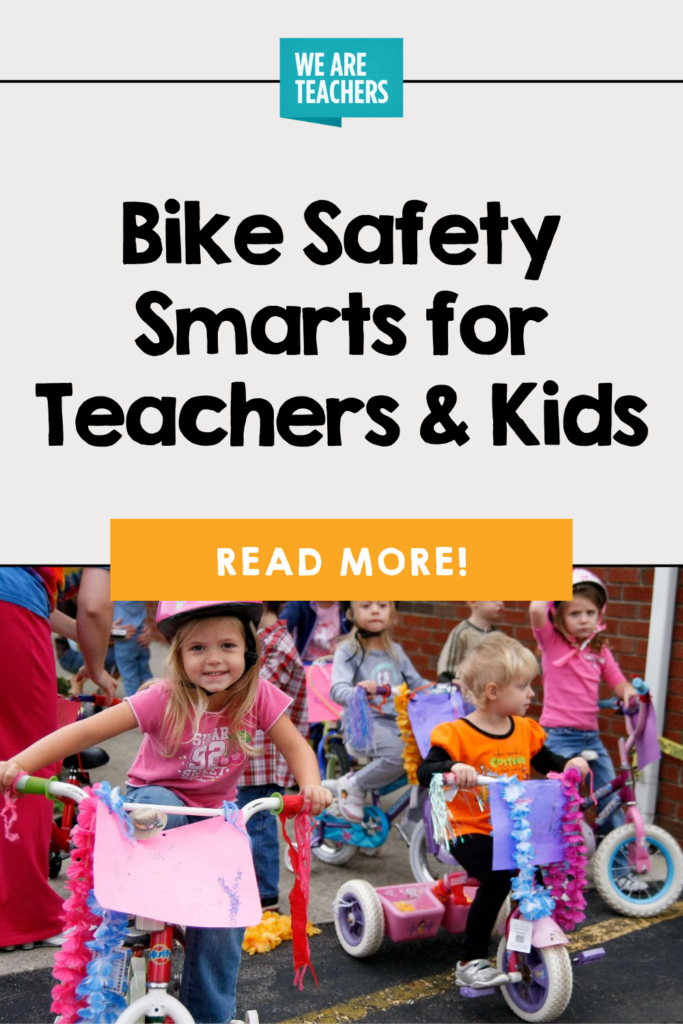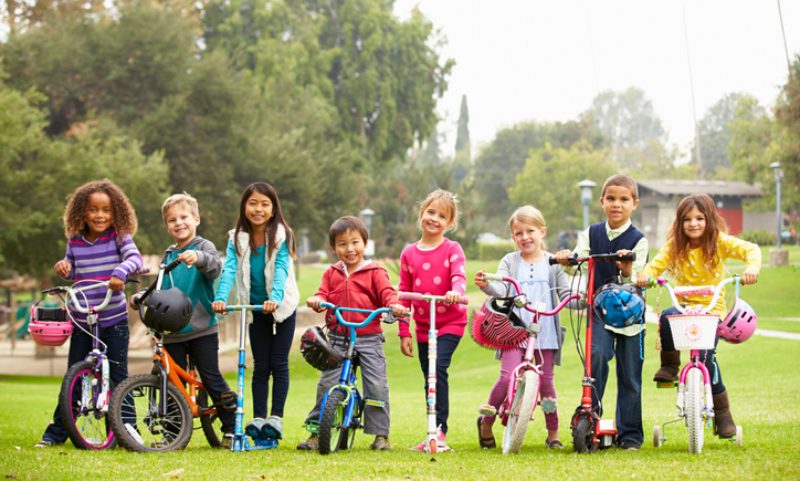Learning to ride a bike is one of childhood’s greatest pleasures. Lots of kids ride to school and spend their free time wheeling around their neighborhoods. But before they head out, make sure your students are well grounded in the bicycle safety rules and smart riding habits that will help them avoid accidents. Here are nine ideas gathered from teachers and the St. Jude Trike-A-Thon team that will inspire you and your students to get outside and ride in a safe and responsible way.
1. Teach bike safety rules.
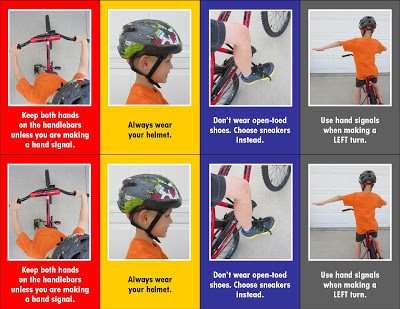
Source: Deceptively Educational
Learning to ride a bike is fun and exciting. But without a solid foundation of how to ride safely, kids can run into trouble. It’s imperative to teach them the rules of the road before they head out on their own. Make sure they know that when it comes to safety, the rules are not negotiable.
Start by teaching your students the Big Four of bike safety:
- Always wear your helmet.
- Never ride in the street.
- Be careful in and around driveways.
- Always watch where you are going.
Then use these Rules of the Road Playing Cards to teach and reinforce basic bike safety rules.
2. Understand why helmets are so important.
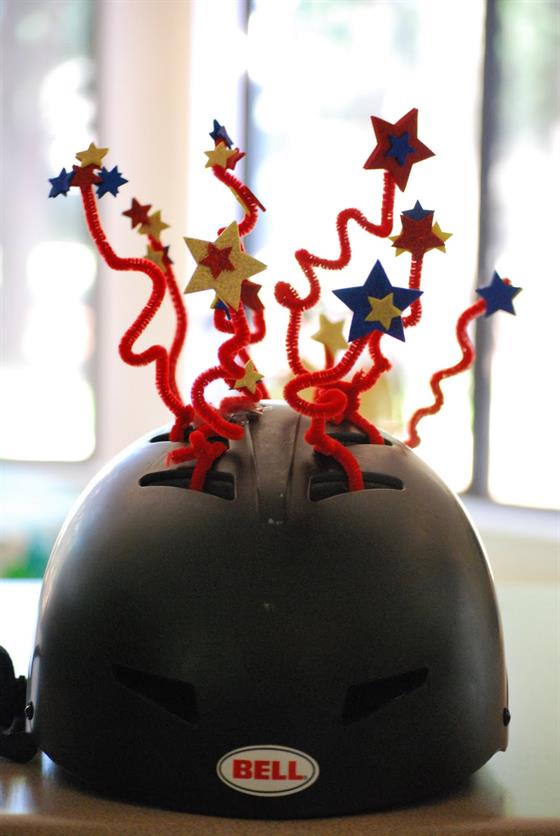
Source: Flour Power
The single most effective way to reduce head injuries from bicycle crashes is to wear a helmet. Make it a rule. Every time your students ride a bike or a trike, they must wear a bicycle helmet that meets or exceeds the safety standards developed by the U.S. Consumer Product Safety Commission.
Research shows that head injuries account for more than 60 percent of bicycle-related hospital admissions and deaths. Helmets can reduce the risk of head injury to bicyclists by as much as 85 percent. Most children will happily wear their helmets—especially if it becomes a habit that you never let them break, like wearing shoes to school.
Get kids excited about wearing their helmets by decorating them with stickers, or try this helmet-decorating idea. All you need is pipe cleaners, glue, and foam shapes to create custom embellishments. Not only will they look adorable, they will make kids more visible and therefore safer!
[contextly_sidebar id=”11laQBhwCuNSoGuhcaUAoI9GT85sLmpV”]
3. Become a bike helmet fit specialist.

Source: Pinterest
Bicycle helmets need to fit properly in order to protect your young riders, but sometimes those straps can be tricky to adjust. Refer to the diagram above for help in making sure your students are strapped in snugly and securely. Share with parents to help them pick out the right helmet for their child.
Also, check out this Bicycle Safety Kit from the National Highway Traffic Safety Administration. It includes a special section for parents and teachers and a list of fun bike and trike activities.
4. Host a Trike-A-Thon for your preschoolers and kindergarteners.
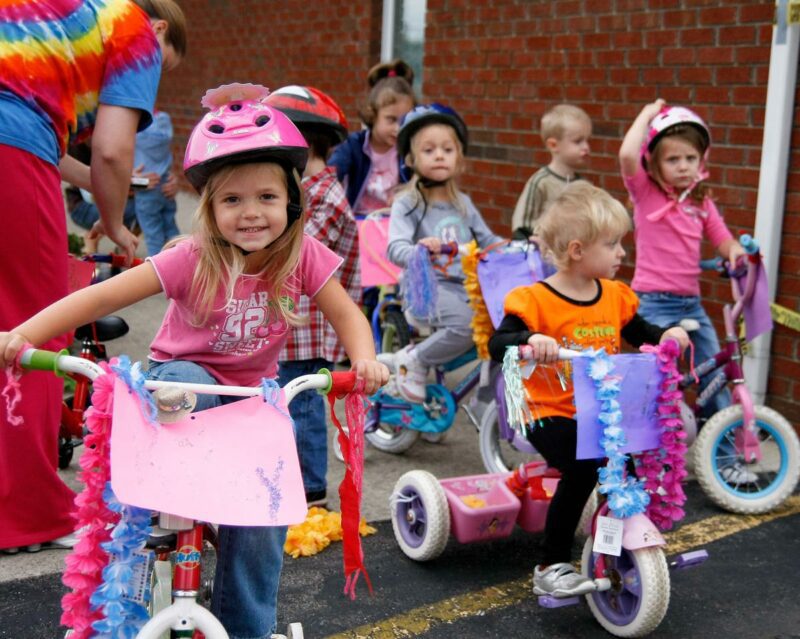
Source: Herald-Dispatch
Treat your preschool and kindergarten students to a fun event that raises funds for a good cause—ending childhood cancer. The St. Jude Trike-A-Thon is a fun service-learning program. And with their free digital coloring book, storybook, and videos, Trike-A-Thon can be easily adapted for at-home learners. Here’s everything you need to know to run a successful event. Bonus: Once your students complete the Trike-A-Thon, you can award them their very own Trike License.
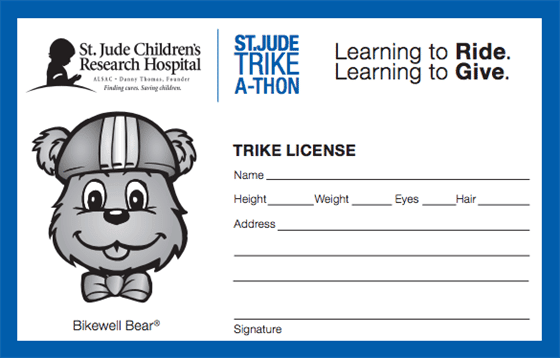
Source: St. Jude’s Trike-A-Thon
5. And don’t forget about the big kids.
Encourage bigger kids in your school or neighborhood to participate in your Trike-A-Thon by holding a ‘big kid’ trike race. Your preschool and kindergarten-age kids will love to share their bike safety smarts with the older kids. They’ll also love winning the tricycle race and watching the bigger kids struggle to pedal the tiny trikes across the finish line.
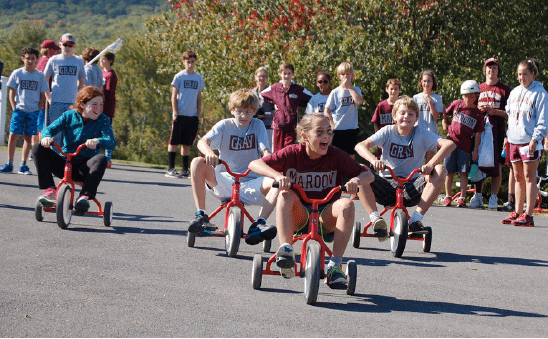
Source: Indian Mountain School
Another option is to host a Slow Bike Race. Invite anyone who can balance a two-wheeler to participate. The object is to go as slowly as possible and be the last person to cross the finish line without touching a foot to the ground. B is for Balance!
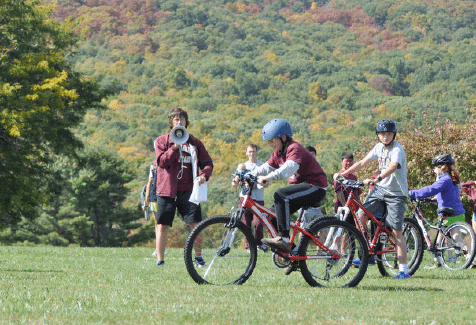
Source: Indian Mountain School
6. Try a fun experiment.
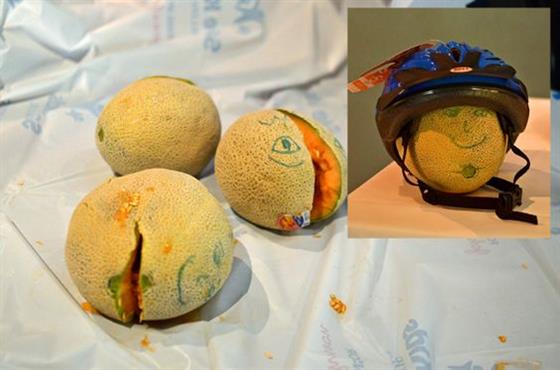
Source: Pinterest
Teach your kids about the importance of helmets with this Protect Your Melon experiment. Not only is it messy fun, but it also demonstrates why it is critical to wear protective helmets when cycling or participating in other activities like skating, riding scooters, and skateboarding.
- Have kids draw faces on two cantaloupes or honeydew melons and talk about how the melons are similar to their heads (they’re both round, hard on the outside, and soft on the inside).
- Strap one of the melons securely into a bicycle helmet. (See fit guide above!)
- Drop the unprotected melon from about shoulder height (or higher). What happens? Does it dent, bruise or split open?
- Next, drop the melon in the helmet from the same height. Does it stay in one piece?
- Point out how effective the helmet was in protecting the melon from the fall. Tell your students that their helmets can protect their heads the same way.
- Celebrate the lesson with a melon snack!
7. Download a bike safety comic book.
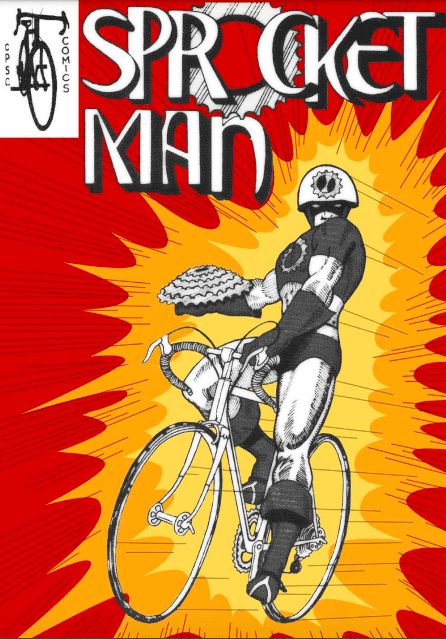
Teach older students bike safety rules with the Sprocket Man comic book. They will learn steps to do a safety inspection, tips to be highly visible, the importance of wearing a helmet, and more. Visit the Consumer Product Safety Commission for additional bike safety experiments and resources.
8. Learn the rules of the road.
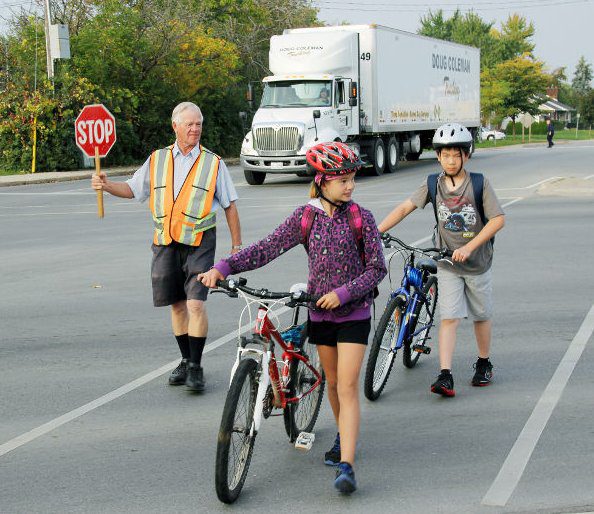
Anyone on foot or riding on a skateboard, cycle, scooter, or skates needs to be hyperaware of vehicle traffic when on or near the road. It is best to practice road safety with younger children on sidewalks and paths at first. Then when you do venture onto roads, supervise them carefully until you are sure they have good traffic skills and judgment. Even if kids are too young to ride on the road alone, you can begin to teach them important skills when they’re riding with adults.
- Before you cross the street, stop and look left, right, and left again.
- Walk facing traffic so the cars can see you as they’re driving. Stay as close to the side of the road as possible.
- Ride your bike the same way the cars go, staying as far to the right as possible.
- Follow the traffic rules. Stop at all stop signs and stoplights.
- Be careful when you turn. Watch for cars and use hand signals if you know them.
- Never ride when it’s dark, foggy, or in other low-visibility conditions.
- Never run out into a street for a ball, a pet, or any other reason.
- Watch for cars backing up in driveways and parking lots.
9. Try fun bicycle (or tricycle) games
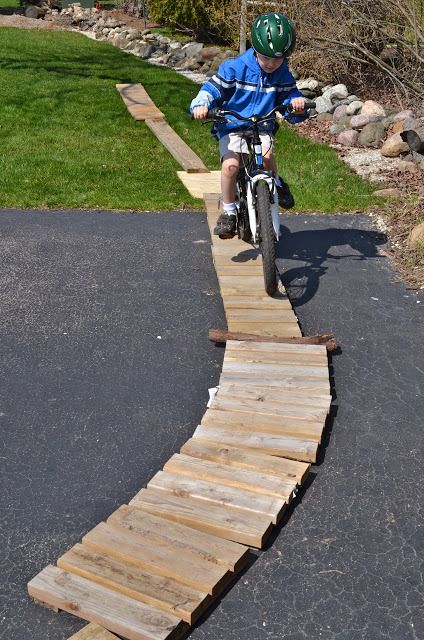
Check out CoolMomPicks for some great ideas for jazzing up a day of cycling, including a bike obstacle course, bike painting, and mud-puddle cycling. Or take a peek at the Kids Activities Blog for more fun ideas like penny pass and slow bicycle races.
Looking for fun ways to get kids outside and moving? Find out more about how you can host a St. Jude Trike-A-Thon.
Schools are helping kids with cancer. Check out how your class can join them!
